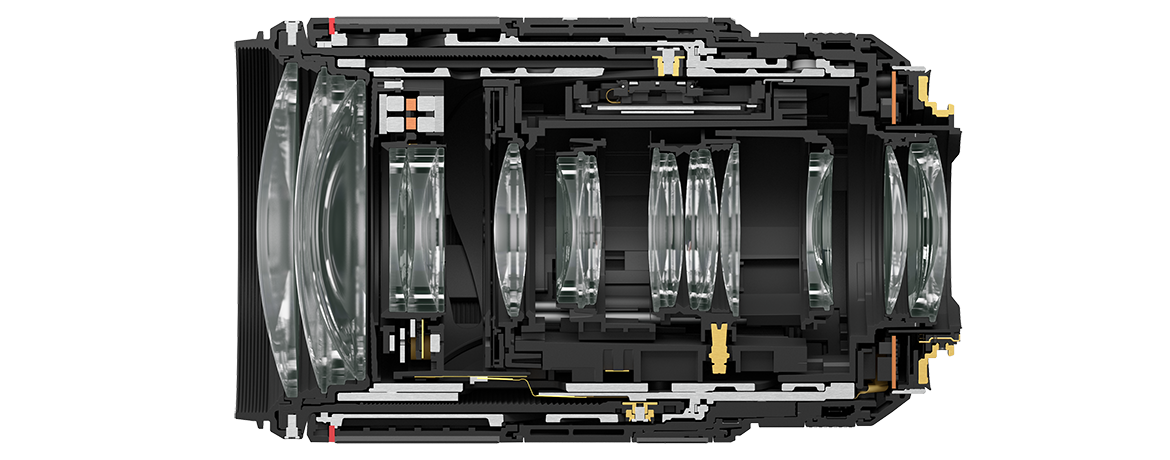Nowadays, optical technology has reached a level where it is possible to produce high-quality images at any shooting distance. Generally speaking, when you use an RF or EF lens, it is unlikely that you will notice any difference in the imaging performance regardless of the shooting distance. This is because the design of most lenses today includes elements that correct for various types of aberration, based on the range of shooting distances at which the lens is most often used. However, when the subject falls outside this “standard range” (particularly when the subject is closer than the distance for which the lens was designed), it is more likely that some sort of aberration will occur.

The degree of performance degradation will depend on the aperture setting, and the type of optical system being used. The shorter the focal length and the larger the aperture, the greater the potential for aberration. Wide-angle lenses, in particular, experience greater image curvature at short distances. If the center of the image is sharp, there will be some blurring at the periphery, while a sharp focus at the periphery will result in blurring at the center of the image. To solve this problem, Canon developed floating mechanism technology that provides ideal aberration correction at all shooting distances.
This minimizes aberration at all shooting distances, delivering excellent imaging performance from close range to infinity. This floating system is used in the EF24mm f/1.4L II USM and other large-aperture wide-angle lenses, as well as the EF180mm f/3.5L Macro USM, allowing them to achieve crisp imaging performance at close range. Large aperture lenses, even those with a near-symmetrical lens structure, tend to experience spherical aberration when used at close range. For this reason, a floating mechanism is used in EF lenses such as the EF50mm f/1.2L USM and EF85mm f/1.2L II USM, and also in RF lenses such as the RF70-200mm f/2.8 L IS USM and RF100-500mm f/4.5-7.1 L IS USM. Unlike the mechanism used in wide-angle lenses, the rearmost lens element of these lenses is fixed in place, while the floating mechanism allows the other elements to be movable. This helps to ensure excellent imaging performance and minimized lens flare at all shooting distances.
